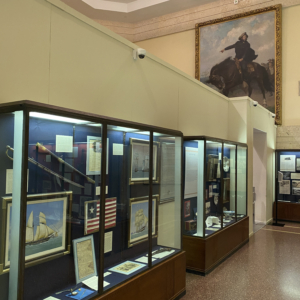Sites listed on the National Park Service’s Register of Historic Places are getting lots of attention, and there is an abundance of funding available for upgrades to facilities located on them. Funding and support are available because these sites and the benefits they provide preserve the country’s legacy and also spur economic development in regions where they are located. A recent report pointed out that historic rehabilitation projects spurred $6.6 billion in investment in 2022 alone. Perhaps the most significant driver of these investments is the federal historic tax credit program, which rewards private sector investment in public sector projects that rehabilitate historic buildings. Now this program may be structured to become even more attractive to investors.
Recently, federal lawmakers introduced the 2023 Historic Tax Credit and Growth Opportunity Act (HTC-GO) in the Senate. This bill would increase the value of federal historic tax credits to cover 30% of costs for projects under $3.75 million while continuing to offer its 20% credit for other eligible projects. As a result, many government officials with a vested interest in historic preservation projects are planning new projects that will be supported by federal programs as well as state support in many states.
The Texas Historical Commission (THC) plans to invest tens of millions of dollars in a project to restore the San Jacinto Battleground historic site. The site is listed as a National Historic Landmark. Currently, it features a visitor’s center that was built in 1938 and has since exceeded its operational capacity. To highlight the importance of the battleground site in the lead-up to Texas’ bicentennial, funding from THC will support a complete restoration of the battleground as well as construction of an expanded visitor’s center that will double as a world-class museum. The $89 million project will begin in 2024 and will be completed within a five-year timeframe.
However, this is just one of several preservation projects in development around the San Jacinto Battleground site. Additional work centers around the USS Battleship Texas, which is being relocated from its site at the San Jacinto Battleground. The THC is investing another $15 million in a project to restore the portion of the San Jacinto Battleground site where the ship was docked for several decades. The project includes demolition of the battleship’s empty slip and restoration of the surrounding land to reflect its appearance at the time of the San Jacinto Battle in 1836. This project is scheduled to begin in 2024.
In 2022, New York led all other states with $1.2 billion invested in rehabilitation of historic sites. Currently, in Buffalo, a $61 million multi-phased plan is underway to redevelop and reuse a historic former railroad station originally built in 1929. The first phase of restoration work will address concerns about stability of the historic structure as well as the deteriorating condition of its adjoining garage facility. Project sponsors then will advertise the project to bidders as soon as the design phase is complete. A launch date for construction is scheduled in early 2024. As this phase of work wraps up in 2025, officials will begin planning to make the federal historic tax credits available to attract investment in the facility’s reuse as a mixed-use complex.
Another federal earmark of $7 million has been requested to restore the City College of New York’s historic Alumni House. The requested funding will cover detailed design, permitting, legal support and community engagement phases of work associated with the facility’s renovation. Once that work is completed, the facility will be repurposed as a community center designed to encourage skills-based workforce development programming.
The Venetian Causeway supports travel over Biscayne Bay in Miami-Dade County, Fla. It has a network of bridges -11 of which date to the causeway’s initial construction in 1926. County officials plan to replace the causeway’s bridges with newer, higher and more climate-resilient spans. According to preliminary planning documents, the new bridges will also maintain the look, scale and feel of the 1926-era structures that they are replacing. A $148 million budget for the county project has already been approved by transportation officials from both the state of Florida and the federal government.
In January, Florida state lawmakers introduced legislation to create a state historic tax credit worth 20% of expenditures on qualified rehabilitation projects (plus an additional 10% credit for historic properties that feature Main Street programs). The new increase could spur a wave of historic rehabilitation and reuse projects in Florida—just one of 10 states in the U.S. that has not already enacted a state historic tax credit.
Officials in Maryland recently allocated $20 million for the state’s 20% historic tax credit program. These state incentives will combine with federal credits to spur several upcoming historic preservation projects planned throughout the state. One such project involves the restoration of a historic building in Cumberland, Md., which was originally built in 1921 as a school. The Carver Community Center will be restored and converted into an inclusive community facility. In April, the city’s historic preservation planning department issued a request for qualifications (RFQ) from qualified firms to help with visioning, strategic planning and community engagement phases of the preservation project. Responses to the RFQ, which are due in early June, will help scope a budget for the project before work begins in 2024.
The National Park Service plans to use more than $1 million in federal funding to acquire land for a new Historic Preservation Training Center on 10 acres of land in Frederick, Md. The project will launch in 2024 for development of the site and construction of a new and expanded Historic Preservation Training Center. It is just another example of the types of large projects currently in the planning stages throughout America.







